- Accueil
- Synths & Samplers
-
Synthesizer (page 4)
Synthesizer (page 4)
Voir les marques
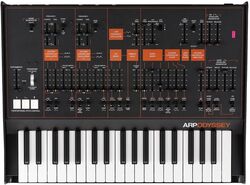
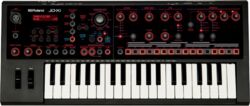

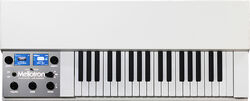
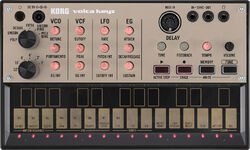
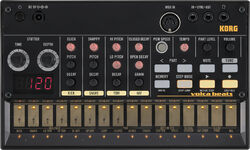
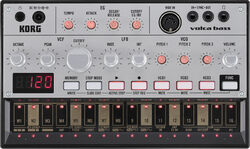
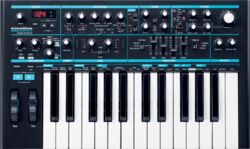
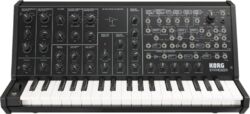
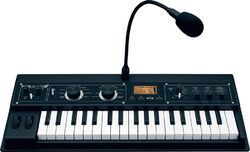
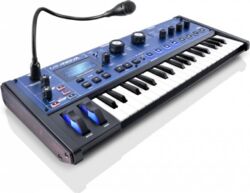
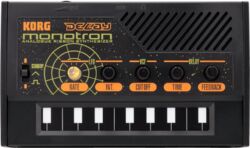

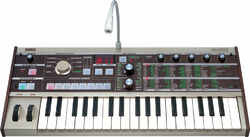

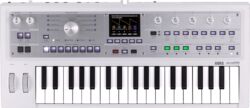
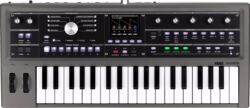
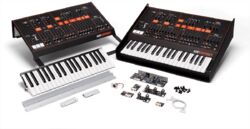
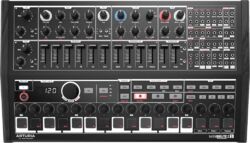
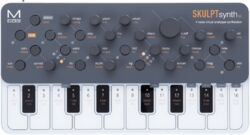




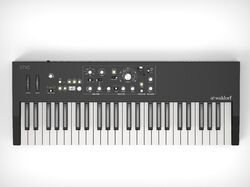
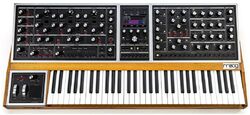

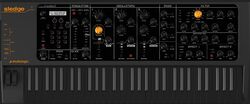

Brands in the category : Synthesizer
What is a synthesizer and how does it work?
How does a synthesizer work? A synthesizer is an electronic musical instrument designed to generate and manipulate sounds. It operates through sound synthesis, a technique that creates sounds by modifying the properties of a wave, such as its frequency or amplitude. Synthesizers can be analog, digital, or hybrid, combining both technologies. An analog synthesizer uses electronic circuits to produce electrical oscillations that are then shaped by different components such as filters (VCF) and amplifiers (VCA). These devices are known for their warmth and organic character. In contrast, a digital synthesizer uses processors to simulate these signals or to generate sounds from complex algorithms like Frequency Modulation (FM synthesis) or physical modeling.
Musicians often choose a synthesizer for its ability to vary sounds, ranging from atmospheric pads to punchy bass. Programming a synth often involves adjusting parameters such as Attack, Decay, Sustain, and Release (ADSR) of an envelope generator, as well as frequency modulation via a Low-Frequency Oscillator (LFO). Some models offer a tactile interface or MIDI controllers for more intuitive interaction. With technological advancements, modern synthesizers often integrate advanced features such as sampling and emulation of legendary vintage instruments.
The use of a synthesizer goes beyond simple melodic playing; it is also a powerful tool for sound experimentation and music creation. Whether in a professional studio or live concert setup, these instruments offer artists an infinite expressive palette to shape their unique sonic signature.
Today, the market is diverse, with iconic brands like Dave Smith, MOOG, Korg, or Roland, alongside newer innovative manufacturers like OTO Machines or Expressive E.
Essential components of a synthesizer:
The essential components of a synthesizer are at the core of its ability to create unique and expressive sounds. At the center of this musical machine is the oscillator, which generates basic sound waves such as sine, square, sawtooth, and triangular waves. These waves form the raw material of sound synthesis. The filter, often referred to as VCF (Voltage-Controlled Filter), modifies the timbre by attenuating certain harmonic frequencies, adding texture and color to the sound. The VCA (Voltage-Controlled Amplifier) plays a key role in sound dynamics, controlling its volume. To further shape the sound over time, envelope generators, often with ADSR (Attack, Decay, Sustain, Release) parameters, determine how the sound evolves from its initial attack to its final decay. LFOs (Low-Frequency Oscillators) add movement and modulation, creating vibrato or tremolo effects. Finally, for a complete and interactive user experience, interfaces such as keyboards, rotary knobs, and touchscreens allow musicians to play and manipulate these components in real-time. Whether in an analog synthesizer with its organic warmth or a digital one with precision and versatility, these elements work together to offer an infinite range of creative possibilities to composers and music producers.
Different types of synthesizers and their characteristics
Analog synthesizers: back to organic
Analog synthesizers are experiencing a marked resurgence, symbolizing a return to more organic and warm sounds. These instruments, often revered for their sonic uniqueness, provide a tactile programming experience that contrasts with digital precision. Their inherent instability is perceived not as a flaw, but as a quality that imparts a lively, almost respiratory dimension to the sound. Musicians and producers seek to capture this electromechanical essence that defined entire musical eras. With components such as oscillators, VCF filters, and VCA amplifiers, the analog synthesizer allows for sonic exploration where each adjustment can significantly alter the final result. This approach to sound synthesis promotes direct and experimental mastery, making each creation unique. Moreover, the modular aspect of some analog synthesizers offers boundless creative freedom, where the musician becomes a true sound architect.
Digital synthesizers: the alliance of past and future
Digital synthesizers represent a remarkable fusion of classical instrument heritage and modern technological advances. They embody the sound synthesis of tomorrow while paying homage to pioneers of the past. With their ability to emulate the warm and organic sounds of analog synthesizers, these instruments offer an extensive sound palette and unprecedented flexibility. Musicians can explore sound through cutting-edge algorithms that allow complex programming and sophisticated physical modeling. Additionally, the stability and precision of digital synthesizers eliminate the instability issues often associated with vintage analog models. The tactile dimension has also improved, with intuitive user interfaces that facilitate experimentation and creativity. Whether recreating the iconic tones of a Hammond or Moog, or generating entirely new sounds, these hybrid instruments are at the forefront of electronic music evolution. They are the ideal choice for composers seeking to blend tradition and innovation in their works.
FM synthesis: a revolution in sound generation
FM synthesis, or Frequency Modulation synthesis, marked a decisive turning point in the history of electronic music. Introduced by Yamaha's famous DX7 synthesizer in the mid-1980s, this technique allowed musicians and producers to explore new sounds. Unlike traditional subtractive synthesis, where harmonics are filtered from a rich signal, FM synthesis creates complex sounds by modulating the frequency of a carrier wave with a modulator wave. The result? An extensive range of timbres, from crystalline bell sounds to deep bass and electric growls. This process not only enriched the expressive spectrum of musical instruments but also paved the way for significant advances in digital signal processing. With its sometimes complex algorithms and programming, FM synthesis requires a certain mastery but offers immense creative potential in return. It is thanks to this innovation that entire musical genres have developed, benefiting from a sonic richness previously unattainable with analog synthesizers.
Physical modeling: recreating real-world sounds
Physical modeling is an advanced sound synthesis technique that faithfully reproduces the sounds of real acoustic instruments. Using complex algorithms and mathematical equations, this method simulates the behavior and physical characteristics of instruments. For example, in an analog synthesizer attempting to mimic a piano, physical modeling takes into account how hammers strike strings, the resonance of the soundboard, and even the interaction between different components of the instrument. This level of detail allows digital synthesizers to emulate not only traditional instruments but also entirely new and imaginary ones. Physical modeling is particularly appreciated in music production and composition for its ability to achieve a realistic and expressive sound that captures the nuances of acoustic instruments. While demanding in terms of processing power, this synthesis technique has become an essential tool in the arsenal of modern composers and producers.
Sampling: the art of capturing and reproducingSampling is a widely used technique in electronic music, hip-hop, and many other genres. It involves capturing and recording snippets of audio from various sources, which can then be manipulated, modified, and played back in a musical context. This method allows musicians to incorporate existing sounds, melodies, or vocals into their compositions. The possibilities are vast, ranging from the classic use of drum breaks in hip-hop to creating entire musical collages. In a synthesizer, the sampling function opens up a world of sonic exploration, enabling the reproduction of realistic instruments or the integration of external sounds into the musical landscape. Advanced sampling capabilities, often found in modern workstations and samplers, provide musicians with the tools to push creative boundaries and break new ground in music production.
These different types of synthesizers and sound synthesis techniques illustrate the vast landscape of electronic music creation. Whether through the warmth of analog circuits, the precision of digital algorithms, or the emulation of real-world instruments, synthesizers continue to shape the sonic palette of contemporary music. Musicians and producers alike can choose from a rich array of tools, each offering its unique sonic possibilities and contributing to the ever-evolving landscape of electronic music.


























